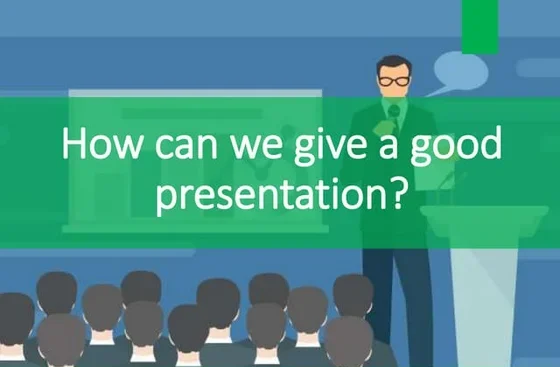Presentations in English: How to Prepare and Deliver it Effective

Presentations in English can greatly enhance your communication skills and boost your professional and academic success. Learning how to deliver a presentation increases the likelihood of a positive outcome with your audience. Reviewing essential steps to giving successful presentations in english can help you get the results you’re hoping for.
To make the task slightly easier, we have compiled some tips for delivering excellent presentations in English language. So, that you can impress your employers, deliver a great sales pitch to clients, present important findings to your team, or get that excellent grade for oral presentation in English at school or university
How to deliver a Presentation in English
Table of Contents
Toggle
Their are some tips and strategies for preparing and delivering effective presentations in English.
1. Consider your audience:
Making sure you understand your audience is essential to preparing, structuring and giving presentations. It’s usually the first step to take, as in many cases, the audience determines what styles of presenting you can choose from. Tailor your content to address their needs and interests. For instance, if you are presenting to experts in a field, you can use more technical language and delve deeper into complex topics.
For example, presenting important annual reports to higher-level management requires a different approach than presenting weekly project updates to your colleagues. To better understand your audience and identify their needs, think about the level of information they already have. You can also consider their familiarity with any technical terms you want to use when presenting.
2. Introduce yourself and the information you're about to deliver:
At the start of your presentation, briefly introduce the subject of your presentation. Doing this gives your audience a chance to better understand the cause of the meeting and what they can expect to hear from you.
If you’re presenting something to a new client or people you simply don’t know, it’s also essential that you introduce yourself.
For example, you may mention your role at the company and why you’re the one presenting.
3. Use simple language:
It’s important when delivering a presentation to speak in a way that’s easy to follow and understand. If you’re preparing a presentation from a research paper that uses a lot of complicated technical terms, it may be a good idea to simplify the spoken language. For example, you can use contractions and more casual speech.
If including complex terms and phrases is essential, consider explaining them verbally as you introduce each slide or graph. When you give a presentation, it’s crucial to use clear and easy-to-understand language. If you’re basing your presentation on a research paper full of complex technical terms, simplify how you speak.
Use contractions and more casual speech. If you must use complicated terms, explain them as you show each slide or graph. This helps your audience follow along without confusion.
4. Engage your audience:
As you go through your slides and notes, consider incorporating some visual or audio elements to break up more significant sections of your speech. You may also ask your audience some questions. This way, you can make sure they’re engaged and understand the information. If you’re delivering a lot of technical information, consider giving your audience an option to ask you any questions they may have before you move to the next topic or slide.
Throughout your presentation, maintain eye contact and use gestures to emphasize important points. Encourage interaction by asking questions or inviting comments. Finally, make sure to tailor your content to their interests and needs, keeping them interested and involved throughout.
5. Memorise the presentation:
Practice each part until you can recall it comfortably. It can also be useful to create visual cues, like bullet points or slides, to prompt you during the presentation. Remember, it’s okay to refer to your notes or slides if needed, but aim to speak naturally and engage with your audience rather than reciting word-for-word.
Memorizing your presentation, including some of the most important numbers or statistics, is a great way to prepare for delivering information to an audience. This way, you can look them directly in the eyes while you speak and quickly react to any questions that they may have.
Paying attention to the audience’s facial expressions can show you if what you’re saying is interesting to them or if they need more clarification to better understand what you’re presenting.
6. Work on your body language:
Your body language tells your audience a lot about how you’re feeling. Using common tricks and working on your body language allows you to appear more professional and deliver a dynamic, interesting speech. In addition to keeping eye contact with your audience, remember to maintain an open and communicative posture.
You can also use gestures to make some statements or parts of your presentation clearer. For example, if you’re presenting a contrast between something big and small, you can use hand gestures to show that.
Maintain eye contact with your audience to establish a connection and convey confidence. Also, be aware of your facial expressions; they should reflect the tone and message of your presentation.
Useful vocabulary to use in presentations

Introductory phrases:
The beginning of your presentation is one of the most important parts, because it sets the tone for what is to come. During your introduction, you will likely need to explain who you are, what your position is and what you are going to be discussing. The following may be helpful as introductory phrases:
“Hello everyone, my name is…”
“Good morning/afternoon/evening, my name is… and I am a…”
“Welcome everybody. Today I am going to talk about…”
Changing focus:
During your presentation, there may be times where you need to shift the focus, in order to make all of the points you wish to make. Drawing attention to any changes of focus can serve to give your presentation a clearer structure and can also help to keep the attention of listeners. Some examples of phrases you might use include:
“I would like to shift focus now to…”
“Next, we need to consider…”
“This leads me to my next point…”
Drawing attention to the slides:
In many cases, your presentation will include visual aids, such as slides on a screen, or handouts. The inclusion of visuals can help to back up the points you are making, while also making the presentation more interesting or exciting. To introduce your slides or other visual aids, you may find the following phrases helpful:
“If I could draw your attention to…”
“This chart/graph/table illustrates…”
“If you look up at the screen…”
“I would like to show you this…”
“On your handout, you may see…”
Summarising a Presentation:
At the end of a presentation, it is important to summarise the main points you have made, so that you can remind listeners of what has been said. This is a chance to point out which parts of the presentation you think are especially important, and ensure everybody leaves with the key pieces of information. Presentations in English is very important in today’s world. So, there are some useful phrases include:
“To summarise…”
“In conclusion…”
“I would like to recap…”
“To sum up what has been said…”
“So, we have covered…”
What Makes a Good Presentation in English

The best presentations engage an audience, convey a clear and obvious message, and leave a lasting impression. In other words, people should leave the meeting feeling that it was worthwhile.
A good presentation in English stands out when it effectively communicates its message to the audience. It begins with a clear purpose—whether to inform, persuade, or inspire—and engages listeners from the start. The content is well-organized, with a logical flow that makes it easy to follow.
Clarity is maintained through simple language and explanations, avoiding unnecessary jargon. Visual aids, like slides or diagrams, enhance understanding without overwhelming the audience. Delivery is confident and engaging, with appropriate use of gestures and eye contact.
Interaction with the audience, such as questions or discussions, keeps them involved. Finally, the presentation concludes with a concise summary and possibly a call to action, leaving the audience with key takeaways and a lasting impression.
Frequently Asked Question (FAQ's)
You can start with a compelling story, a thought-provoking question, or an intriguing fact related to your topic to grab your audience’s attention from the beginning.
Always have a backup plan, such as printed copies of your slides or access to your presentation on a secondary device. Doing a tech run before the presentation can also help mitigate potential issues.
Interactive polls, quick storytelling related to the topic, or a short, relevant game can be great ways to break the ice and engage your audience from the start.
End with a strong conclusion that ties back to your key message, and provide a clear call to action or thought-provoking question to leave the audience contemplating your topic.
Listen carefully to each question, repeat it for clarity if necessary, and answer concisely and confidently. If you don’t know the answer, offer to follow up later with more information.
